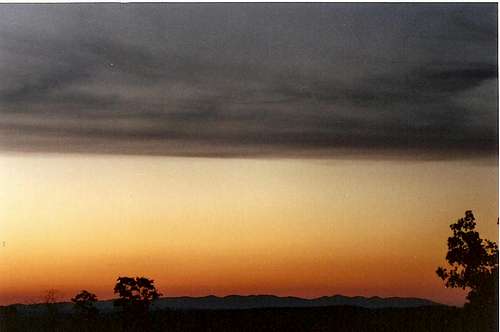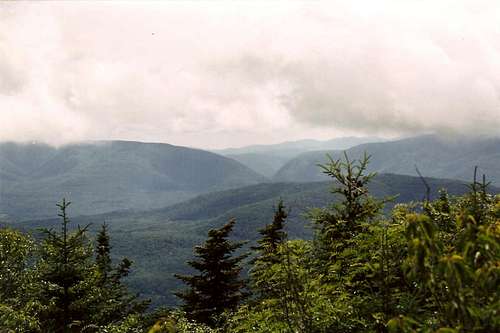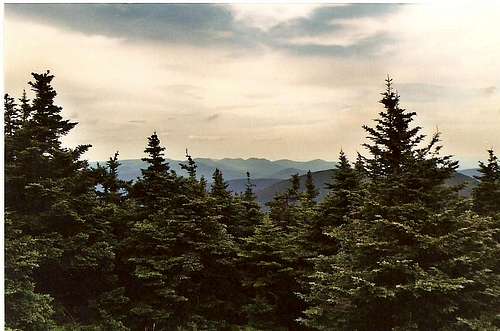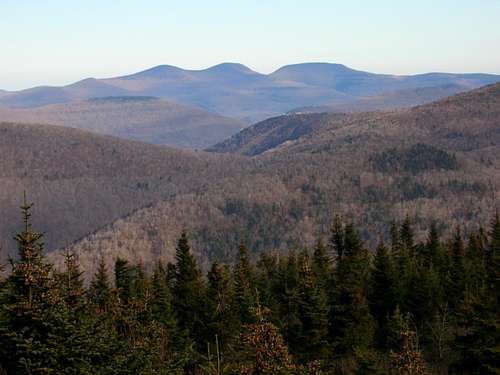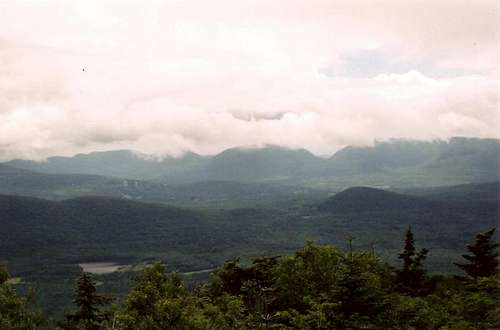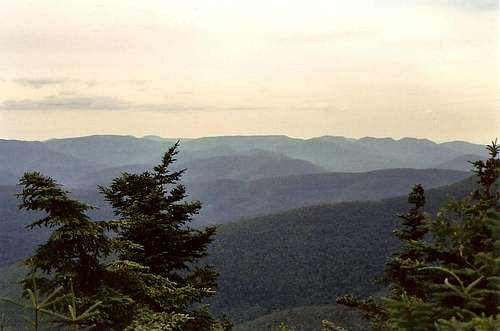|
|
Area/Range |
|---|---|
|
|
41.99969°N / 74.38568°W |
|
|
Hiking, Mountaineering, Trad Climbing, Toprope, Ice Climbing, Scrambling, Skiing |
|
|
Spring, Summer, Fall, Winter |
|
|
Introduction
The Catskill mountain region consists of a fairly large area in four counties of south eastern New York State. The land area is approximately 1500 square miles and the forest preserve lands are nearly 300,000 acres. Forest Preserve lands combined with private land is over 700,000 acres.There are 35 peaks above 3,500 feet (the Catskill 3500'ers) and a total of 98 mountains above 3000 feet. Second to the Adirondacks, the Catskills are New Yorks Highest and most rugged mountains. This range tops out on the summit of Slide Mountain at an elevation of 4,190 Ft. Although these heights are relatively low by mountain standards, the Catskills are not to be underestimated as there are many fun scrambles and challenging rocky/rooty trails that lead to the tops of these peaks!
Although there is no treeline to rise above, there are a surprising amount of rock outcroppings on or near the summits of many peaks that offer excellent views of the surrounding mountains, lakes, and the majestic Hudson River. The Catskill Divide seperates the Hudson and Deleware River basins. All of the taller 3500'ers are full of Balsam Fir trees on thier summits, the smell one gets while visiting these areas is quite a treat.
Most trailheads can be reached within a two hour drive from New York City. This close proximity to the city has both scarred, with industry, tourism, and logging, long gone, and blessed, with artistic influence and inspiration, these mountains into what they are today, a beautiful, historic area that seems to have found a balance between people and nature.
The Catskills are host to several good ski areas and a few quaint towns. Towns like Phoenicia, Tannersville, and Woodstock are great places to visit whether you are climbing in the area, skiing, or just passing through. These towns have good to great restaurants, B&B's, some artistic influence, and a unique Catskill charm.
History
Geoligical:The Catskills are not directly related geologically to thier close neighbors, the Adirondacks, Taconics, or Appalachians. They are the tallest remnants of the Allegheny Plateau, a shallow sea bed that was uplifted during the Devonian Period approximately 400 million years ago. The uplift of the Devonian sediments took place in several stages. During the much later Miocene stage, 24 million years ago, and subsequent stages, the rock was influenced by several episodes of Pleistocene glaciation. Today the highest peaks are located where the uplift was the greatest and where thier conglomerate sandstones were able to resist erosion by the advance of the continental ice sheets and later by glacial meltwaters.
The Catskill Range is the highest land area left from the Allegheny Plateau which spans south to West Virginia and west to Ohio. The Glacial activity and meltwaters carved and forged the Allegheny Plateau into what it is today, and in the Catskills it is steep and beautiful mountains. Anyone traveling alongside the Catskills on the NY state thruway will notice the abrupt rise of the land from 500 to 2500 ft. This land rise is known as the Escarpment. This is the edge of the Allegheny Plateau. Some of the high peaks rising to over 3500 Ft. sit just beyond the Escarpment making for a dramatic change in elevation within a three mile distance, an impressive gain.
Human influence:
After the disappearance of the paleolithic hunters who followed large animal herds with the retreating ice age, the land was occupied by Native Americans more than 5000 years ago. There was much native american activity along the great Hudson River. These people were forced west with the colonial expansion. The colonists claiming the best riverside and agricultural lands.
After the British surrendered to the colonists in 1781, Hudson Valley settlers took a more confident attitude towards commercial investment. Many farmers and business people began to prosper. With river travel becoming more economical, westward expansion into the mountains began. Roads were cut into the hills to support bluestone quarrying and bustling tanning industries which utilized the abundant amount of hemlock trees for thier tannic acid extracted from the bark.
The industries took a dive when the demand for bluestone subsided and most of the hemlock trees were cut down, along with all of the other trees. This decline in industry was a welcome respite from ruin for this area.
In 1840, there were more than 100 steamships in service between New York City and the Catskills providing round trips in under ten hours. By 1850, the tourism age was at full swing with the famed "mountain houses" (fancy hotels) Furnishing affluent New Yorkers weekend and summer getaways. The Catskill Mountain House is said to be Americas first luxury hotel, built in 1824. This tourism trend also took a downturn with New Yorks elite finding other areas of interest and the call for such grandeur was abated.
Artistic influnce has also left its mark on these mountains, An artist named Thomas Cole began the Hudson River School of Painting,(an interesting link), Americas first school of painting. These artists found inspiration while on the ledges of the Catskill mountains overlooking the Hudson River. One mountain even bears Mr. Coles name at 3950 Ft. in the Blackhead wild forest/range.
Some of Americas first true hiking trails, evolved from the simple love of nature, were created in these mountains. One of the first trails, named the Escarpment Trail was a marked trail for at least part of it's present length as early as 1825. This would be 65 years before Henry Van Hoevenbergs Adirondack LOJ, 84 years before the Long Trail and 97 years before the Appalachian Trail.
On may 15 1885, governor David B. Hill signed into law the requisite that all the lands owned or which may hereafter be aquired by the state of New York for the Catskill Mountain area shall be forever kept as wild forest lands. An active policy of aquisition followed and what is now the Catskill Forest Preserve was born.
The name "Catskills"
The name "Catskills" did not come into popular use until the mid 19th century. Previously the locals preferred to call this area the Blue Mountains, Harmonizing with Vermont's Green's and New Hampshire's Whites.The reason for this name change is still unknown, but there are some theories...
-Bobcats frequented the area.
-The name derived from the Dutch word Kasteel. A Dutch sailors term for the Indian stockades they saw along the river.
-It was to honor the dutch poet Jacob Cats.
-A ship named the Cat sailed up the Hudson shortly before the name was first used.
It is said that the name "Catskills" did not come into popular use until after Washington Irvings popular Story, Rip Van Winkle, which told of a man's adventures, (and a nap), in the Catskill mountains.
Was it one of these reasons, or a combination, Maybe it was fate. Still it is a very catchy name.
The Mountains
A complete list of the Catskill 3500'ers can be found here Crafted by RobA, with information on summit height, which mountain summits can be attained by trail or bushwack, and which have firetowers on top. There is also a list for fellow Summit Poster's to sign when they have completed the Catskill 3500'ers.Here are some short descriptions of some mountains in the Catskills that I believe deserve special mention.
-Wittenberg
-Cornell
-Slide
These three mountains are a part of the Slide Mountain Wilderness. The Wittenberg-Cornell-Slide trail traverses thier summits. The trail begins at the Woodland Valley Campground, (one of the Catskills finest) and ends at the Slide Mountain Trailhead on county road 47, (a truly stunning backcountry road). An excellent 17 mile loop can be done by turning right on this road and at the next trailhead/parking area, reentering the woods(right) onto the Phoenicia-East Branch Trail, which leads you back to
Woodland Valley. This is a true Catskill classic with Challenging terrain, excellent views and a backcountry feel putting this hike on the top of my list. Not to mention that Slide is the tallest in this range.
-Indian Head
-Twin
-Sugarloaf
-Plateau
Located in the Indian Head Wilderness, these four peaks are the most rugged of all the Catskills. The Devils Path crosses thier summits, another Catskill classic. Every mountain here has great views and deep, steep notches seperating them, making for a fun, scrambly traverse.
-Black Head
-Black Dome
-Thomas Cole
The Blackhead range is one of the northernmost high peak areas of the Catskills. Just a really magnificent area with great views and excellent, challenging trails.
-Hunter
Hunter is the second tallest in the Catskills but only has views from the summit fire tower and from some trailside cliffs on the west side, but is is a solid hike in a beautiful area.
-West Kill
West Kill is a wonderful mountain with some of the best views in all of the Catskills.
-Giant Ledge
-Panther
Also located in the Slide Mountain Wilderness, these mountains have alot to offer. They can both be reached from the Woodland Valley campground. Giant Ledge is known for it's excellent ridge top camping, just below the 3500' limit, with excellent views a few steps from the camping area. Panther sits in the dead center of a very interesting area that was hit by a meteorite 375 million years ago. The esopus creek and Woodland Creek form an almost perfect circle around Panther, a direct result of the meteor impact.
Location, Maps & Books
The Catskills are about a 2 - 2 1/2 hour drive from New York City. Located between NYC & Albany on interstate 87, exits 19, 20 & 21.Also the western Catskills can be reached via Interstate 17 from exits 90 through 96.
The New York / New Jersey Trail Conference make some of the best and most accurate maps I have ever seen for any mountain area. The maps include elevation, trails and names, road names, towns and trail descriptions. Finding the trailheads are easy with these maps as well as following the trails. For a more detailed description of the Catskill Mountains I would highly suggest the Catskill Mountain Guide by Peter W. Kick, an Appalachian Mountain Club book.
The New York / New Jersey Trail Conference is a non profit organization devoted to trail maintenence & preservation of the Catskills and many other beautiful areas.
Camping
There are many great state run campsites in the Catskills. here is a list and some info on them all.Here is the page for the state run campgrounds for the Catskills & Adirondacks. This will provide detailed information on these areas.
-Woodland Valley: This campsite is one of the best in the Catskills. An excellent location with acess to some of the best hikes in these mountains. Including Slide Mountain. Yes Showers
-Beaver Kill: A great campsite in the western Catskill region away from the higher peaks but in a truly stunning area with a remote natural beauty one would not think possible so close to civilization. Yes Showers
-North/South Lake: A very large campsite in a unique area. Many short hikes lead to breathtaking views of the Hudson River. This is a good family campsite. Yes Showers
-Devils Tombstone: Right smack in the middle of the Devils Path. This campsite affords access to Hunter mountain, the West Kill and Indian Head ranges. No Showers
-Monogaup Pond: Pond side camping in the western Catskills, away from the larger mountains. Yes Showers
-Little Pond: A charming pond side camping area also in the western Catskills. Yes Showers
-Kenneth L. Wilson: Located between the towns of Woodstock and Phoenicia, Kenneth L. Wilson campsite is a secluded, wooded area away from the main hiking trails but still offering views of the surrounding mountains looming above. Yes Showers
-Bear Spring Mountain: The western most state run campsite with pond side camping and easy hiking in the immediate area. Yes Showers
Red Tape / Backcountry camping
If camping in the wilderness, these regulations are to be followed:For backcountry camping permits (when neccesary, see below) visit the DEC website under services.
-Pack it in-pack it out
-No more than three succesive nights or more than ten nights per year can be spent in trailside lean-tos.
-A permit must be obtained from the DEC forest rangers if camping more than three succesive nights or in groups of ten or more. No permits will be issued to anyone under the age of 18.
-The DEC may take down & remove any tent or camping structure that is left alone for more than 48 hours
-No camping above 3500' between March 22 and December 20.
-No fires shall be left unattended
-No camping within 150 feet of any road, trail, spring, stream, or other bodies of water except in camping areas designated by the DEC.
-Rangers do Frequent these mountains.
More useful links:
The Catskill 3500 Club. A hiking organization dedicated to the climbing of all 35 peaks above 3500'. Four of which must be re-climbed in winter for a total of 39 climbs.The New York / North Jersey chapter of the Appalachian Mountain Club.



